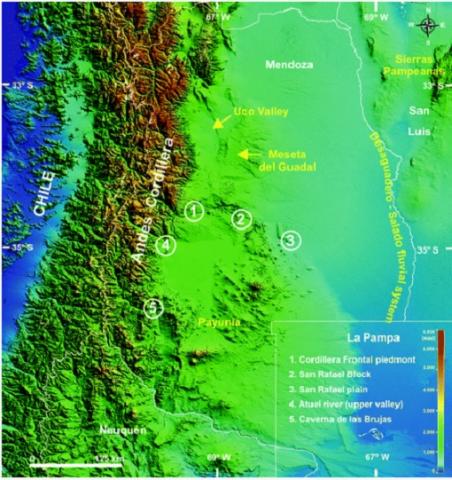Marcelo Zárate, Adriana Mehl, Alfonsina Tripaldi
2 016
Marine Isotope Stage 3 in Southern South America, 60 KA B.P.-30 KA B.P. pp 167-181
Marine Isotope Stage 3 (MIS 3) is characterized by high climatic variability resulting from numerous centennial to millennial scale events. The environmental and climatic reconstruction of this interval is restricted by the sparsity of high-resolution (centennial-scale) terrestrial records in most of South America. This contribution is an attempt to reconstruct the general environmental and climatic conditions of southern South America during MIS 3 by means of continental records located in central Argentina; this is an extensive and heterogeneous region made up of diverse geomorphological settings under different climatic conditions. Therefore, the main features of several aeolian and fluvial records situated in different geomorphological settings across the region are overviewed. The results indicate the predominance of regional aggradation during MIS 3 with differences in the accumulation rates and dominance of either aeolian or fluvial deposits depending on the geomorphological setting. The aggradation process was interrupted by stability intervals evidenced by paleosols in the San Rafael plain, the San Luis paleo-dunefield, the eastern Sierras Pampeanas piedmont and the eastern Pampean plain. The paleosols might represent lapses of decreasing aeolian input and perhaps more humid conditions. In addition, paleobiological indicators from alluvial sequences suggest higher temperatures and water availability between 35 and 31 ka in the Andean piedmont, while dry subhumid or strongly seasonal conditions with alternating subhumid-humid phases were inferred in the eastern Pampean plain during MIS 3. These intervals tend to cluster during the second part of MIS 3, and might reflect the environmental responses to some of the climatic oscillations that occurred during MIS 3. Detailed analysis and a more adjusted chronology are needed to correlate the aeolian and fluvial episodes along with the stability intervals at regional and continental scales.
https://link.springer.com/chapter/10.1007/978-3-319-40000-6_10

